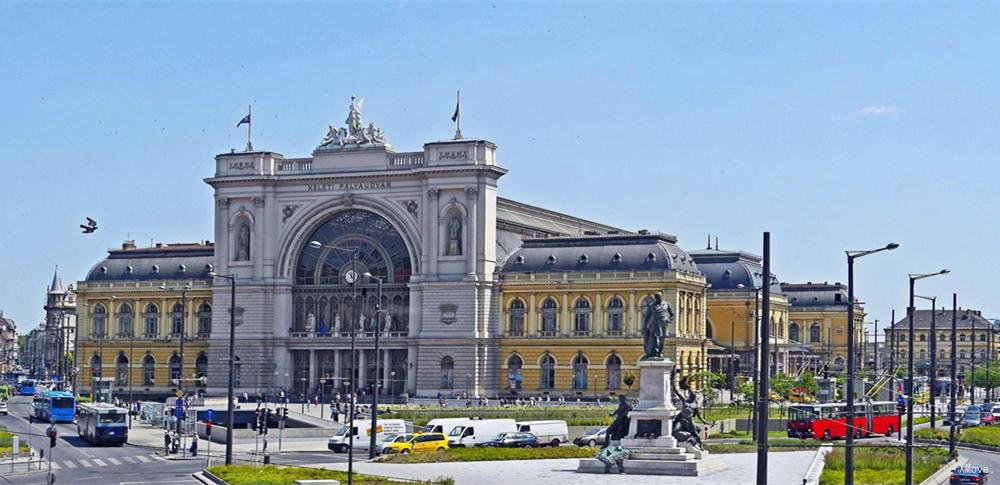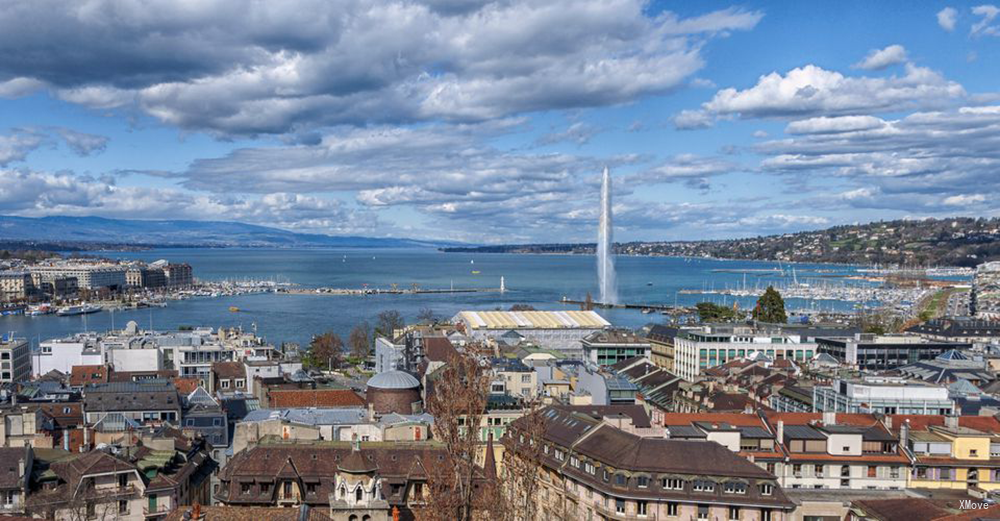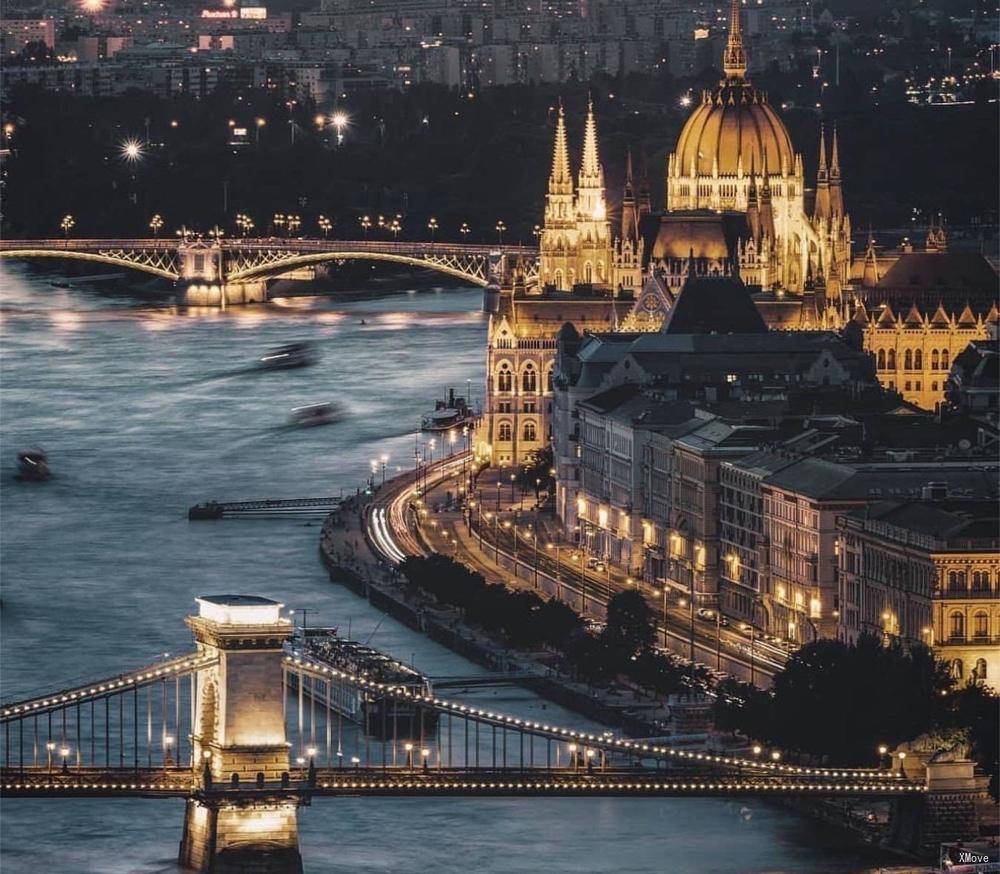Genève to Budapest Central: Trains, Buses, Fares, Today's Connections, Routes, Duration, Types of Trains, Station Guides, Tips, Journey
Switzerland Train Tickets
Train schedule Genève to Budapest Central(Budapest Keleti Pályaudva)
Popular train routes departing from Genève
* Chur
* Cannes
* Bern Hbf
* Basel Sbb
* St Pierre Des Corps
* Paris Lyon Station Noctilien(Paris Gare De Lyon Noctilien)
* Zermatt
Popular train routes arriving in Genève
* Vevey
* Trung Tâm Bologna(Bologna Centrale)
* Nhà Ga Chính Của Cologne(Köln Hbf)
* Lucerne(Luzern)
* Marseilles Saint Charles(Marseille Saint Charles)
* Rome Termini(Roma Termini)
* Chambery Challes E
Popular train routes departing from Budapest Central(Budapest Keleti Pályaudva)
* Vienna Erdberg (U3)(Wien Erdberg (U3))
* Zürich Hb
* Prague Central(Praha Hlavní Nádraží (Prag Hl. N.))
* Vienna Erdberg(Vienna Erdberg)
* Vienna Airport(Wien Flughafen)
* Bratislava
* Graz Central(Graz Hbf)
Popular train routes arriving in Budapest Central(Budapest Keleti Pályaudva)
* 格平根(Göppingen)
* 扎達爾(Zadar)
* 蘭茨圖爾(Landstuhl)
* 布加勒斯特北站中央火車站(Bucuresti Nord Gara B (Basarab,Bucharest))
* 薩爾茨韋德爾(Salzwedel)
* 羅馬(Roma)
* 阿赫恩(Achern)
Budapest Central
The train connects Budapest with all the central and eastern countries of Europe. Unless otherwise indicated, all trains will arrive at Budapest Keleti pályaudva, so if you arrive in Budapest by train, you should get off at East Railway Station. All international trains depart from the Keleti station, and domestic trains to Miskolc, Eger, Győr and Szombathely also depart from here.
You can choose to take the M2 line and get off at the Keleti pályaudvar stop. The starting point of Metro Line 4, the subway M2 and M4 meet here.
Budapest Central - Station Guide | Departures and Arrivals | Popular Routes

Geneva ( jin-EE-və; French: Genève [ʒənɛv] ; Arpitan: Genèva [dzəˈnɛva] ; German: Genf [ɡɛnf] ; Italian: Ginevra [dʒiˈneːvra]; Romansh: Genevra) is the second-most populous city in Switzerland (after Zürich) and the most populous city of Romandy, the French-speaking part of Switzerland. Situated where the Rhône exits Lake Geneva, it is the capital of the Republic and Canton of Geneva. The municipality (ville de Genève) has a population (as of December 2018) of 201,818, and the canton (essentially the city and its inner-ring suburbs) has 499,480 residents. In 2014, the compact agglomération du Grand Genève had 946,000 inhabitants in 212 communities in both Switzerland and France. Within Swiss territory, the commuter area named "Métropole lémanique" contains a population of 1.26 million. This area is essentially spread east from Geneva towards the Riviera area (Vevey, Montreux) and north-east towards Yverdon-les-Bains, in the neighbouring canton of Vaud. Geneva is a global city, a financial centre, and a worldwide centre for diplomacy due to the presence of numerous international organizations, including the headquarters of many agencies of the United Nations and the Red Cross. Geneva hosts the highest number of international organizations in the world. It is also where the Geneva Conventions were signed, which chiefly concern the treatment of wartime non-combatants and prisoners of war. In 2017, Geneva was ranked as the world's fifteenth most important financial centre for competitiveness by the Global Financial Centres Index, fifth in Europe behind London, Zürich, Frankfurt and Luxembourg. In 2019 Geneva was ranked among the ten most liveable cities in the world by Mercer together with Zürich and Basel. The city has been referred to as the world's most compact metropolis and the "Peace Capital". In 2017, Geneva was ranked as the seventh most expensive city in the world. Geneva was ranked third in purchasing power in a global cities ranking by UBS in 2018.
Geneva - Guide, Attractions, Tours, Sightseeings | Train from/to Geneva | Popular RoutesBudapest (, Hungarian pronunciation: [ˈbudɒpɛʃt]) is the capital and the most populous city of Hungary, and the tenth-largest city in the European Union by population within city limits. The city has an estimated population of 1,752,286 over a land area of about 525 square kilometres (203 square miles). Budapest is both a city and county, and forms the centre of the Budapest metropolitan area, which has an area of 7,626 square kilometres (2,944 square miles) and a population of 3,303,786, comprising 33% of the population of Hungary.The history of Budapest began when an early Celtic settlement transformed into the Roman town of Aquincum, the capital of Lower Pannonia. The Hungarians arrived in the territory in the late 9th century. The area was pillaged by the Mongols in 1241. Buda, the settlements on the west bank of the river, became one of the centres of Renaissance humanist culture by the 15th century. The Battle of Mohács, in 1526, was followed by nearly 150 years of Ottoman rule. After the reconquest of Buda in 1686, the region entered a new age of prosperity. Pest-Buda became a global city with the unification of Buda, Óbuda, and Pest on 17 November 1873, with the name 'Budapest' given to the new capital. Budapest also became the co-capital of the Austro-Hungarian Empire, a great power that dissolved in 1918, following World War I. The city was the focal point of the Hungarian Revolution of 1848, the Battle of Budapest in 1945, and the Hungarian Revolution of 1956.Budapest is an Alpha − global city with strengths in commerce, finance, media, art, fashion, research, technology, education, and entertainment. It is Hungary's financial centre and was ranked as the second fastest-developing urban economy in Europe. Budapest is the headquarters of the European Institute of Innovation and Technology, the European Police College and the first foreign office of the China Investment Promotion Agency. Over 40 colleges and universities are located in Budapest, including the Eötvös Loránd University, the Semmelweis University and the Budapest University of Technology and Economics. Opened in 1896, the city's subway system, the Budapest Metro, serves 1.27 million, while the Budapest Tram Network serves 1.08 million passengers daily.Among Budapest's important museums and cultural institutions is the Museum of Fine Arts. Further famous cultural institutions are the Hungarian National Museum, House of Terror, Franz Liszt Academy of Music, Hungarian State Opera House and National Széchényi Library. The central area of the city along the Danube River is classified as a UNESCO World Heritage Site and has several notable monuments, including the Hungarian Parliament, Buda Castle, Fisherman's Bastion, Gresham Palace, Széchenyi Chain Bridge, Matthias Church and the Liberty Statue. Other famous landmarks include Andrássy Avenue, St. Stephen's Basilica, Heroes' Square, the Great Market Hall, the Nyugati Railway Station built by the Eiffel Company of Paris in 1877 and the second-oldest metro line in the world, the Millennium Underground Railway. The city also has around 80 geothermal springs, the largest thermal water cave system, second largest synagogue, and third largest Parliament building in the world. Budapest attracts 4.4 million international tourists per year, making it a popular destination in Europe.
Budapest - Guide, Attractions, Tours, Sightseeings | Train from/to Budapest | Popular Routes
Switzerland Train Tickets
Hot Journeys
* Busan(부산) -> Seoul(서울)
* Paris -> Frankfurt
* Seoul(서울) -> Jeonju Si(전주시)
* Stuttgart -> Frankfurt
* Lucerne(Luzern) -> Arth
* Turin(Torino) -> Milan
* Dusseldorf(Düsseldorf) -> Munich(Müchen)
* Florence -> Prato(Prato)
* Milan -> Turin(Torino)
* Seoul(서울) -> Busan(부산)
* Rome(Roma) -> Milan
* Paris -> Munich(Müchen)
* Seoul(서울) -> Gwangju Metropolitan City(광주광역시)
* Berlin(Berlin) -> Munich(Müchen)
* Lucerne(Luzern) -> Interlaken
* Frankfurt -> Dusseldorf(Düsseldorf)
* Brussels(Bruxelles) -> Paris
* Nice -> Milan
* Tokyo(東京) -> Osaka(大阪)
* Florence -> Pisa
* Dusseldorf(Düsseldorf) -> Frankfurt Airport(Frankfurt Flughafen)
* Bremen(Bremen) -> Freiburg Im Breisgau
* Milan -> Como
* Moscow(Москва) -> St. Petersburg(санкт петербург)
* London(London) -> Paris
* Naples -> Florence
* Cologne(Köln) -> Frankfurt




